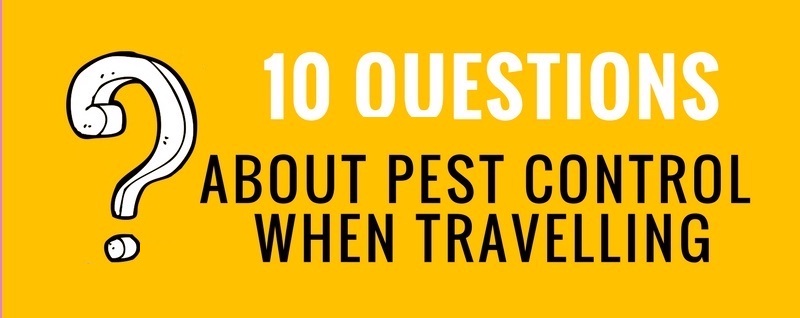The Keys Of Insect Control Pros! Unleash The Power Of Advanced Strategies And Say Goodbye To Pesky Insects Completely
The Keys Of Insect Control Pros! Unleash The Power Of Advanced Strategies And Say Goodbye To Pesky Insects Completely
Blog Article
https://how-to-safely-remove-a-ra27271.tkzblog.com/25733269/bid-farewell-to-parasites-discover-the-trick-to-discovering-trusted-parasite-control-specialists-near-you-get-rid-of-insects-completely-with-our-specialist-pointers -Damgaard Caspersen
Are you tired of relying exclusively on sprays to deal with pests in your house or work environment? While sprays can be effective, pest control specialists have actually established sophisticated methods that go beyond simply splashing chemicals.
These techniques not just provide extra reliable and long-lasting services, however additionally focus on decreasing making use of dangerous chemicals. By exploring these sophisticated methods, you will uncover an entire brand-new globe of insect control methods that are not just effective, but likewise environmentally friendly.
So, are you prepared to take your bug control video game to the following level?
Integrated Pest Administration (IPM)
If you're seeking an effective and environmentally-friendly approach to pest control, Integrated Parasite Administration (IPM) is the solution you require. https://how-to-remove-scratches-f28406.eedblog.com/25857082/looking-into-advanced-approaches-employed-by-bug-management-professionals focuses on lasting prevention and administration of parasites, instead of merely depending on pesticides. This approach thinks about the certain demands and habits of pests, along with the surrounding environment.
By utilizing a combination of methods such as organic control, habitat control, and targeted chemical usage, IPM intends to decrease the dependence on chemical therapies and minimize injury to non-target organisms.
gopher pest control of IPM is keeping an eye on and recognizing insects accurately. This entails consistently examining and evaluating the pest populace, in addition to determining the particular types present. By recognizing the biology and actions of bugs, bug control specialists can develop targeted techniques to disrupt their life process and lower their numbers.
An additional crucial aspect of IPM is making use of non-chemical control approaches whenever possible. This can include physical obstacles, such as setting up displays or sealing splits and holes, to stop insects from getting in buildings. Additionally, social methods, like appropriate cleanliness and waste management, can help remove pest food resources and breeding grounds.
When pesticides are necessary, IPM concentrates on using them judiciously and as a last resource. This means choosing the least harmful and most efficient alternative, applying it specifically and just to affected areas, and complying with all security standards. By minimizing pesticide usage, IPM reduces the potential dangers to human health and the environment.
Biological Control
To additionally enhance the performance of Integrated Bug Management (IPM), the following subtopic we'll explore is the method of biological control. This method uses all-natural predators or bloodsuckers to regulate insects.
Below are 4 vital aspects of biological control:.
1. Intro of all-natural opponents: In this method, valuable insects or organisms are introduced to the location ravaged with parasites. These all-natural enemies take advantage of the parasites, aiding to minimize their population.
2. Conservation of natural adversaries: Instead of presenting new organisms, this technique concentrates on producing an ideal setting for existing advantageous insects. This can be attained with giving food, sanctuary, and water sources.
3. Enhancement: Below, the number of natural enemies is increased artificially by breeding and releasing them into the infested location. This aids to rapidly lower the pest populace.
4. Push-pull method: This technique integrates repellents and attractants to manipulate the actions of pests. Repellents push insects away from crops, while attractants entice them towards trap plants or areas where they can be easily managed.
Habitat Adjustment
Environment alteration plays a critical duty in bug control by modifying the setting to prevent bug problems. By making changes to the physical attributes of a space, you can produce an unwelcoming atmosphere for bugs, making it harder for them to make it through and flourish.
One typical technique of habitat alteration is eliminating or minimizing prospective food resources for insects. This can consist of proper waste monitoring, sealing containers, and tidying up food crumbs.
In addition, removing or lowering areas of standing water can help control bugs like mosquitoes.
Transforming the landscape by cutting trees and hedges away from structures can also stop pests from accessing your home.
Final thought.
So there you have it - the innovative techniques utilized by pest control professionals go beyond simply splashing chemicals. Integrated Bug Monitoring (IPM) combines different methods to efficiently control bugs, while biological control uses natural enemies to maintain bug populations in check.
Environment modification also plays an important function in preventing pest infestations.
Did you understand that according to a research study, carrying out IPM strategies minimized chemical use by approximately 71%? This not only safeguards our health and the atmosphere but additionally saves money over time.
